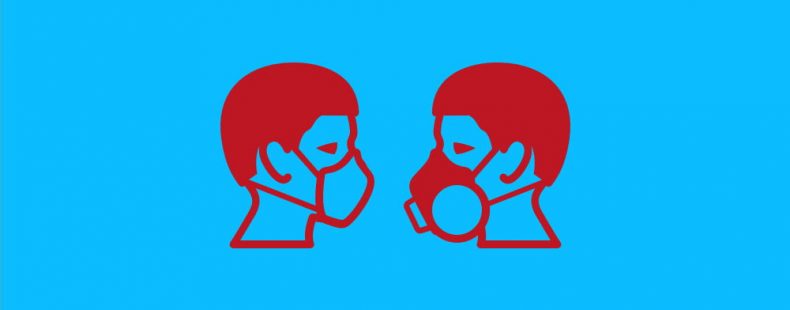by John Kelly, Senior Research Editor at Dictionary.com
During the coronavirus break, you may have heard that hospital and healthcare providers have faced a shortage of respirators and ventilators, two critical tools in fighting the infection.
Now, many of us know that both respirators and ventilators deal with breathing in some way, but may be confused about the difference between them. Are they both just face masks? Are respirators and ventilators synonyms? Can they be used interchangeably?
Medical terminology can be confusing and overwhelming, and using the terms properly is important in a time of crisis. So, let’s get to the bottom of these terms for two life-saving tools. And for more info on need-to-know coronavirus words, see our explainers on epidemic vs. pandemic, quarantine vs. isolation, and our glossary on all things COVID-19.
What is a respirator?
A respirator is a masklike device, usually of gauze, worn over the mouth, or nose and mouth, to prevent the inhalation of noxious substances or the like. Health professionals wear respirators to filter out virus particles as they breathe in so they don’t get infected with COVID-19 while helping people and patients.
The CDC specifically recommends health professionals using what are called N95 respirators. This type of respirator fits more tightly around the nose and mouth than regular medical or surgical masks. Another type of respirator is known as PAPR, short for powered air-purifying respirators, which covers the whole head and uses a blower to filter air.
Respirators are a form of PPE, which stands for personal protective equipment. Other types of PPE health professionals wear to protect them from such hazards as COVD-19 include goggles, gloves, and gowns.
Respiration is the inhalation and exhalation of air—that is, breathing. Respiratory means “pertaining to or serving for respiration,” as in a respiratory disease like COVID-19.
The word respirator, in its medical senses, dates back to around 1785–95. Respirator, respiratory, and respiration all derive from the Latin verb respīrāre, “to breathe, breathe out.” This verb is based on spīrāre, “to breathe,” also the source of such words as inspire, perspire, transpire, and spirit.
What is a ventilator?
In medical contexts, a ventilator is a machine that helps a patient breathe. This machine pumps oxygen into the lungs and removes carbon dioxide through a tube. The insertion of this tube into a person’s windpipe (trachea) is called intubation.
The verb ventilate can refer to oxygenating the blood (i.e., supplying it with oxygen) or helping someone breathing using a mechanical ventilator.
COVID-19 is a respiratory disease, and it can cause lung inflammation (pneumonia), which makes breathing difficulty for patients. That’s why ventilators are needed to help treat some patients with the infection.
Ventilator is first recorded around 1735–45. The word, along with ventilate and ventilation, come from the Latin ventilāre, “to fan,” based on ventus, “wind.” The English word wind and the Latin ventus are, in fact, related. The word vent is also from Latin’s ventus.
How to use respirator and ventilator
Sometimes the ventilators are called respirators, because sometimes respirator refers to various machines that produce artificial respiration—like ventilators. That gets confusing, and it’s vital to be clear communicators and observe technical distinctions during emergencies.
To avoid confusion:
Use ventilator for machines that help patients breathe.
Use respirator for the protective masks health professionals wear.














